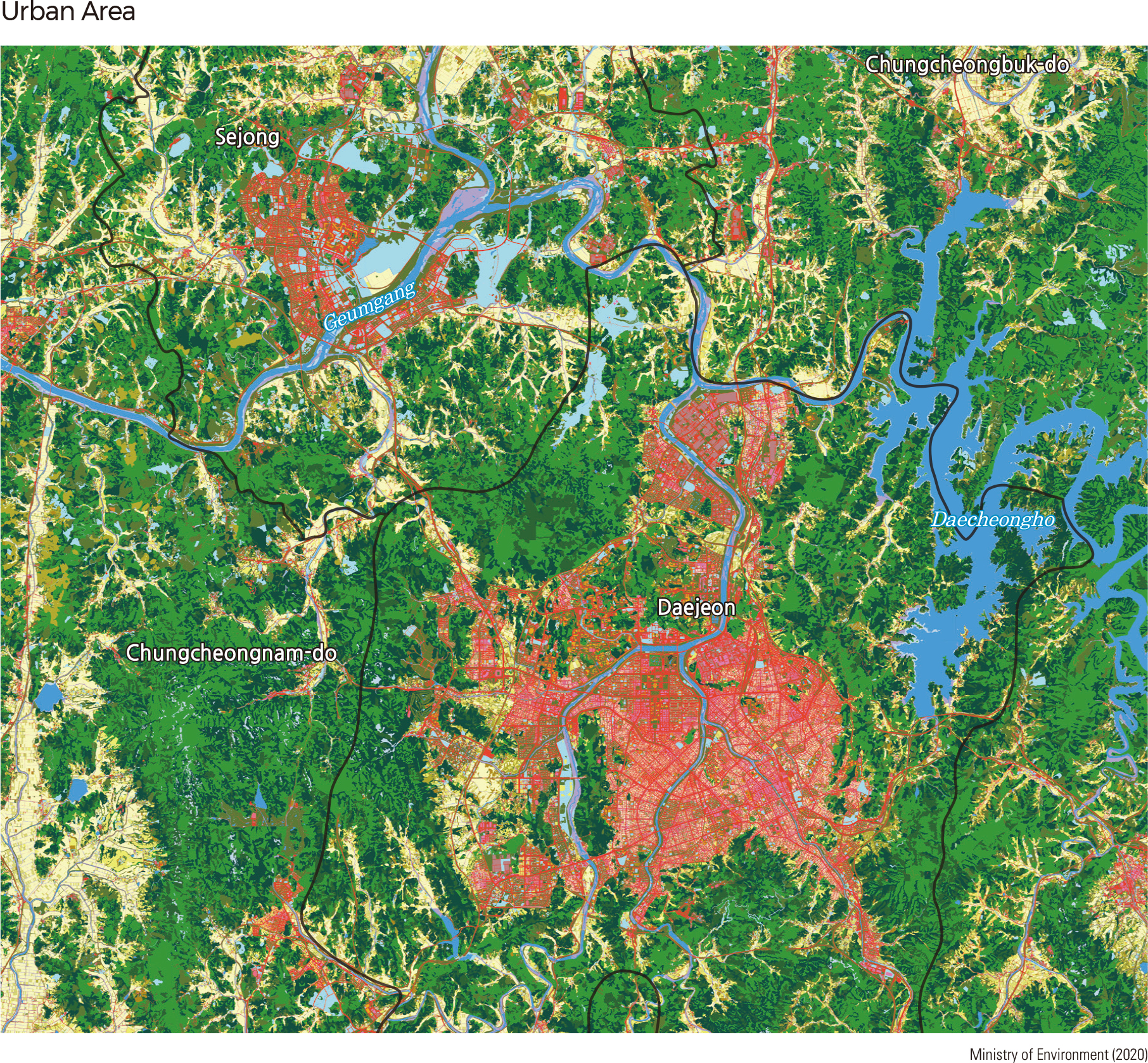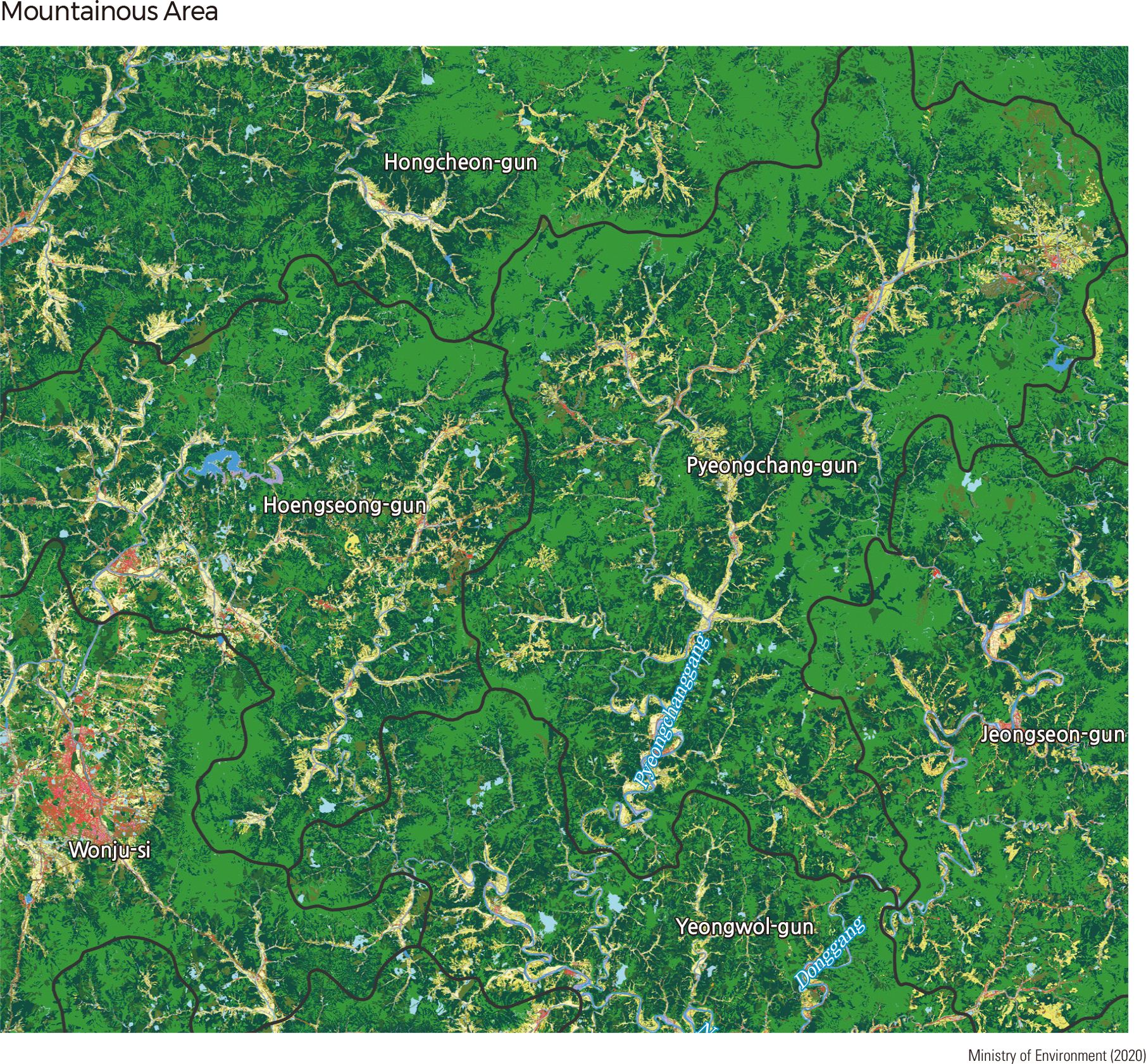Comprehensive Edition 2022
The Ministry of Environment maintains a series of progressively detailed land cover maps to encourage effective land management and environmentally friendly land usage. The four mapped regions shown here are selected to represent the diversity of landscape and landcover patterns found across the Korean Peninsula.
<photograph> Plains: Korea’s major grain belts can be found across Mangyeongpyeongya and Gimjepyeongya. Collectively known as Honampyeongya, these alluvial plains are located in the lower regions of Mangyeonggang and Dongjingang. Located at the center of the plains is Gimje-si, which has the highest proportion of agricultural land out of all the local governments of Korea. Plains situated near streams or rivers are usually used as rice paddies, while forests and urban or developed areas are located on the hills.
<photograph> Urban areas: Many cities such as Seoul, Chuncheon-si, Hongcheon-gun, Wonju-si, and Daejeon developed in erosional basins near large, flowing rivers. Owing to the availability of water from rivers and underground sources as well as their natural drainage systems, these regions are typically seen as suitable locations for human habitation. Alluvial plains are also highly populated, as they possess fertile soil that is advantageous for farming.
<photograph> Mountains Area: The northeastern part of South Korea consists of Taebaeksanmaek and its surrounding mountainous areas. Cropland and roads have been developed along the many streams that run between the mountains. Although such geomorphological features make these areas difficult to access, they are also considered ideal vacation destinations because of their clean mountains and creeks. Furthermore, high plantation surfaces located 1,000 m above sea level are widely used for vegetable fields and pastures.
<photograph> Coastal Area: Taebaeksanmaek runs parallel to the east coast, resulting in narrow coastal plains and small-scale ports here. Wider plains can be found where rivers flow into the sea. Since the 1970s, Pohang-si—a relatively wide urban area near Yeongil Bay—has been one of Korea’s major steel industrial centers. |





